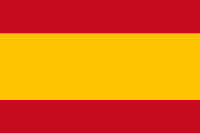The next Bitcoin halving is expected to happen around March 26th, 2028; this is when the number of blocks is possibly at 740,000. By then, the block reward will fall from 6.25 to 3.125 bitcoins. With the network averaging one block every ten minutes, the time taken to generate new blocks varies.
There are two ways to trade Bitcoin’s halving: you could buy the coins outright through an exchange or speculate on the cryptocurrency’s pricing using derivatives like CFDs. By using CFDs, the main benefit is that you do not have to take ownership of the underlying coins while trading cryptocurrencies with derivatives.
This, in turn, allows you to take a position on bitcoin depending on whether you expect it to rise or fall in the market. You could also open a position by putting down a deposit called margin to gain access to a much larger market exposure. Users could also trade without an exchange account or wallet, which makes it less time-consuming too.
The main reason why bitcoins halve is due to their design software. This design was created by a person or group called Satoshi Nakamoto. They haven’t explained why specifically but many people say that the system was designed to distribute more coins quickly at the beginning so that more people would join the platform to mine new blocks. Another theory is that the halvings were introduced as a warning about deflation in the coin so that the number of coins rewarded per block is pre-determined.
The last time Bitcoin was halved was in April 2024. Halving before that occurred in Bitcoin on 11 May 2020; then, the mining rewards became 50% lower, from 12.5 new bitcoin per block to 6.35 bitcoin. Despite this, the price continued to rise afterward and by the next year, the price reached $49504. The next Bitcoin halving will only occur on March 26th, 2028.
How Bitcoin Halving Affects Small Miners?
For every 210,000 blocks mined, the mining rewards get halved. Halving has a larger impact on miners than the price of the Bitcoin. They will have to adjust their ways to accommodate the smaller rewards they get from mining by capital expenditure, cutting operational costs, or selling more of their Bitcoin.
With each halving, even though the price is lessened, the value remains the same, for example, if a user has 50 BTC and after halving, the price fluctuates which may be equivalent to 3 BTC, when this actually is a loss to the user, this is the case of small miners. They will not have a huge profit over this as their investment will already be less and after halving, that will be even less. Halving is profitable to people who invest a lot of money in cryptocurrencies as halving will not affect them in the long run.
Bitcoin Halvings vs. Other Cryptocurrency Supply Reductions
Several other cryptocurrencies also undergo halving. In Litecoin, block rewards miners get for verifying and adding a block to the blockchain are reduced by half every four years like Bitcoin. Litecoin’s halving occurs after every 840,000 blocks.
Dash is an open-source PRoof-of-work cryptocurrency, which was previously known as Darkcoin. Dash halving also occurs every 4 years, which is approximately 210,000, like Bitcoin. Block halving is not just limited to Bitcoin, other cryptocurrency blockchains also experience halving. It is important as it reduces miner rewards, increasing the scarcity of these coins. The scarcity of these currencies will hike in price and despite this reduced price, miners still remain profitable due to potential price appreciation.
Predictions for Bitcoin’s Market Position After Future Halvings
Different people make different predictions about future halvings. Many say that Bitcoin’s value will reduce by more than 15% by the end of this halving, and some say that no matter what cryptocurrency, after halving, as the price will increase, the demand will not be any less.






